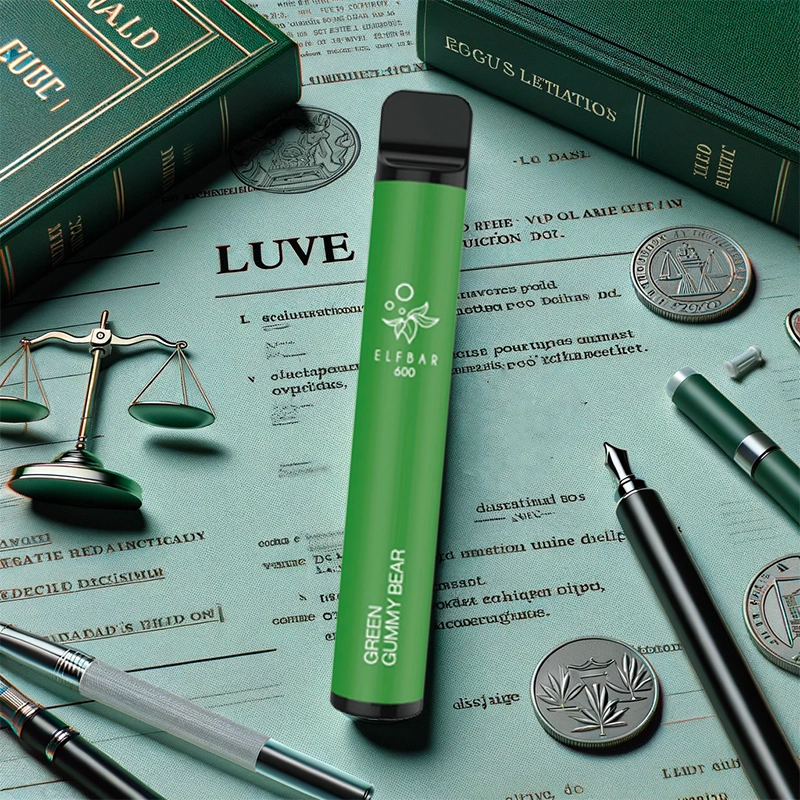Disposable Vape Regulations: What You Need to Know
Disposable vapes have become increasingly popular in recent years as an alternative to traditional smoking. However, concerns have been raised about the health and safety risks associated with these products, as well as their environmental impact. As a result, regulatory bodies have introduced a range of measures to regulate the use and disposal of disposable vapes.
The regulatory landscape of disposable vapes is complex and constantly evolving. In the UK, for example, the maximum nicotine allowed in a disposable device is 20mg (2%) per disposable device. The maximum e-liquid allowed in a disposable vape device is 2ml, and the device must have been submitted to the MHRA. An expiry date must be displayed on the device, and the packaging must display a valid ECID number and nicotine warnings. These regulations are designed to ensure that disposable vapes are safe for use and that they do not pose a risk to public health.
Despite these regulations, concerns remain about the health and safety risks associated with disposable vapes. Some studies have suggested that these products may be just as harmful as traditional cigarettes, while others have argued that they are a safer alternative. Additionally, concerns have been raised about the environmental impact of disposable vapes and their impact on public opinion. As a result, it is important for regulators to continue to monitor the use and disposal of these products in order to ensure that they are safe and sustainable.
Contents
- 1 Regulatory Landscape of Disposable Vapes
- 2 Health and Safety Concerns
- 3 Environmental Impact and Disposal
- 4 Societal Impact and Public Opinion
- 5 Frequently Asked Questions:
- 5.1 Are there any regulations in place for disposable vapes in the UK?
- 5.2 Is there a legal limit on the nicotine content in disposable vapes in the UK?
- 5.3 What is the MHRA vape check and how does it relate to disposable vapes?
- 5.4 What are the consequences of selling or using unregulated disposable vapes in the UK?
Key Takeaways
- Disposable vapes are subject to a range of regulations designed to ensure their safety and sustainability.
- Health and safety concerns remain about the use of disposable vapes, and their impact on public opinion and the environment is also a concern.
- Regulators must continue to monitor the use and disposal of disposable vapes in order to ensure that they are safe and sustainable.
Regulatory Landscape of Disposable Vapes
Disposable vape regulations are a complex and evolving area of law, with multiple entities involved in setting and enforcing rules around the sale and use of these products. This section provides an overview of the key regulatory considerations for disposable vapes in the UK and internationally.
UK Legislation and MHRA Role
In the UK, disposable vapes and other vaping products are regulated by the Medicines and Healthcare products Regulatory Agency (MHRA) under the Tobacco and Related Products Regulations 2016. The regulations cover a range of issues, including nicotine strength, age of sale, and packaging requirements.
Enforcement and Compliance
Enforcement of disposable vape regulations is carried out by Trading Standards, who have the power to inspect retailers and seize products that do not comply with the regulations. Retailers are responsible for ensuring that their products are compliant with the regulations, and failure to do so can result in fines or even imprisonment.
International Regulations and Restrictions
Disposable vape regulations vary widely around the world, with some countries banning the sale of these products altogether. In New Zealand, for example, a ban on the sale of disposable vape pens came into effect in 2023, while in Scotland, the Scottish Government has launched a consultation on the regulation of these products.
Government Consultation and Future Directions
The UK government has launched a number of consultations on disposable vapes in recent years, as part of its wider Smokefree and Tobacco Control Plan. These consultations have covered issues such as advertising and marketing laws, age of sale laws, and product safety and packaging guidelines.
Marketing and Advertising Laws
Disposable vape marketing and advertising laws are designed to protect consumers from misleading or harmful information. In the UK, the Advertising Standards Authority (ASA) is responsible for enforcing these laws, and has the power to ban ads that breach the regulations.
Product Safety and Packaging Guidelines
Disposable vape product safety and packaging guidelines are set out in the General Product Safety Regulations 2005. These regulations require manufacturers to ensure that their products are safe for consumers to use and that they are packaged in a way that minimises the risk of harm.
In conclusion, disposable vape regulations are complex and evolving, with multiple entities involved in setting and enforcing rules around the sale and use of these products. Retailers and manufacturers must ensure that their products comply with the relevant regulations to avoid fines or other penalties.
Health and Safety Concerns
Health Effects of Vaping
Vaping has become increasingly popular in recent years, but there are still concerns about the potential health effects of using e-cigarettes. According to a 2021 evidence update summary by the UK government, while vaping is less harmful than smoking, it is not completely without risk. The update states that vaping can cause lung damage and respiratory symptoms, although the long-term effects of vaping are not yet fully understood.
Adverse Events and Reporting
The yellow card scheme is a system used in the UK to report suspected adverse reactions to medicines or medical devices. According to a 2022 evidence update summary, there have been reports of adverse events associated with vaping, including chest pain, shortness of breath, and coughing. It is important to report any adverse events to the yellow card scheme so that they can be investigated and monitored.
Nicotine Levels and Strength
One of the concerns with vaping is the potential for nicotine addiction. According to the 2021 evidence update summary, e-cigarettes can deliver nicotine more efficiently than traditional cigarettes, and the nicotine levels and strength of e-cigarettes can vary widely. This can make it difficult for users to know how much nicotine they are consuming and can increase the risk of addiction.
In conclusion, while vaping is generally considered to be less harmful than smoking, there are still concerns about the potential health effects of using e-cigarettes. It is important to report any adverse events to the yellow card scheme so that they can be investigated and monitored. Additionally, the varying nicotine levels and strength of e-cigarettes can increase the risk of addiction, making it important for users to be aware of how much nicotine they are consuming.
Environmental Impact and Disposal
Environmental Impact of Vaping
Disposable vapes have been a subject of concern due to their environmental impact. A typical disposable vape pen contains plastic, copper, and lithium, which can have a negative impact on the environment. Some environmental organisations have campaigned for a ban on these products, whereas others have called for an end to vapes being marketed as disposable products and are seeking greater emphasis on, and support for, recycling. The vape industry has called for the government to provide more clarity around which regulations do and do not apply to disposable vapes.
Disposal and Recycling of Vape Products
As the popularity of vaping products has grown, so too has the need for appropriate waste management measures. In the UK, new measures have been implemented concerning the disposal of vape and e-cigarette devices. The Waste Electrical and Electronic Equipment (WEEE) regulations have been enforced in the industry, prompting the need for appropriate waste management measures.
Recycling is one of the best ways to reduce the environmental impact of vaping products. Reusable, rechargeable vapes are a good alternative to disposable vapes. By banning disposable vapes, we can shift from our throwaway culture to one of reuse. This will make better use of the valuable resources and stop toxic waste from leaking into the environment.
It is important to dispose of vaping products properly. Many local authorities have recycling schemes in place for these products, and they should be disposed of through these schemes. Vaping products should not be disposed of in general waste bins as they can pose a risk to the environment.
Societal Impact and Public Opinion
Prevalence and Use Among Young People
Disposable vapes have become increasingly popular in recent years, particularly among young people. According to the Smoking Toolkit Study, in 2021, 11.7% of 11-18 year olds in the UK reported using e-cigarettes in the past month. Additionally, the Opinions and Lifestyle Survey found that in 2020, 8.8% of 16-24 year olds reported using e-cigarettes daily or occasionally. These statistics highlight the need for regulations to protect young people from the potential harms of vaping.
Public Opinion and Surveys
Public opinion regarding disposable vapes is mixed. According to the Annual Population Survey, in 2020, 43% of adults in the UK agreed that e-cigarettes are a good way to quit smoking, while 23% disagreed. However, there are concerns about the potential harms of vaping, particularly among young people. The Opinions and Lifestyle Survey found that in 2020, 77% of adults in the UK thought that e-cigarettes were less harmful than smoking, but only 29% thought that e-cigarettes were safe for young people to use.
There is also concern about the impact of disposable vapes on non-smokers. The Smoking Toolkit Study found that in 2021, 2.2% of non-smokers in the UK reported using e-cigarettes in the past month. This highlights the need for regulations to prevent non-smokers, particularly young people, from being exposed to the potential harms of vaping.
In conclusion, while there is support for the use of e-cigarettes as a smoking cessation aid, there are also concerns about the potential harms of vaping, particularly among young people. Public opinion regarding disposable vapes is mixed, highlighting the need for further education and regulation to protect young people and non-smokers from the potential harms of vaping.
Frequently Asked Questions:
Are there any regulations in place for disposable vapes in the UK?
Is there a legal limit on the nicotine content in disposable vapes in the UK?
What is the MHRA vape check and how does it relate to disposable vapes?
What are the consequences of selling or using unregulated disposable vapes in the UK?


Leave a Reply